December 21, 2017 report
A glucose testing patch that doesn't require pricking the skin
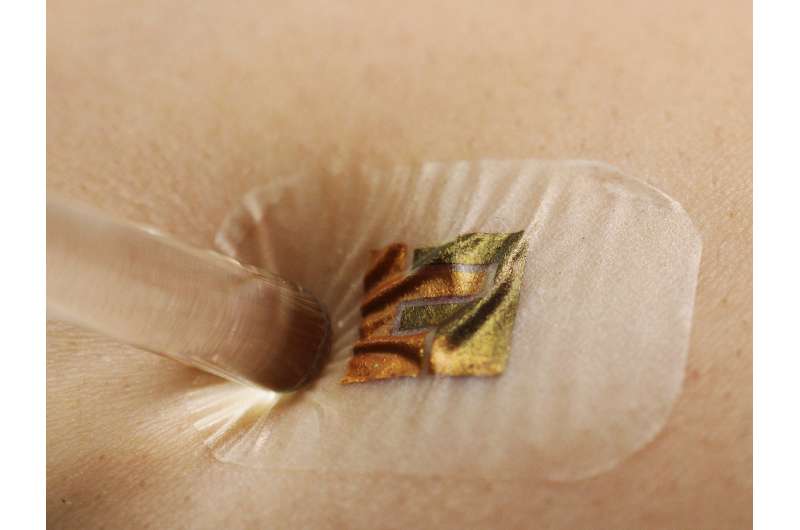
A team of researchers from Tsinghua University working with People's Liberation Army Air Force General Hospital, both in China, has developed a two-stage patch that can be used to test glucose levels. In their paper published on the open access site Science Advances, the group describes their patch system and how it fared in a small sample test with volunteer human patients.
The life of a person living with diabetes is more difficult than many people realize, in addition to constantly monitoring their diet, they also have to test their own blood for glucose levels and take medication or give themselves insulin shots periodically. In this new effort, the researchers in China sought to make life a little easier for such people by developing an easier way to test their glucose levels.
For most diabetics, the only way to check their glucose levels is to use a small device that pricks the skin just enough to draw blood, usually from a fingertip. A drop of blood is then squeezed onto a test strip inserted into a glucose monitoring device, which then offers a reading. This process is painful and sometimes results in infection, which is why some diabetics stop testing, putting themselves at risk.
In this new approach, the researchers came up with a two-stage, non-invasive method to accomplish the same thing. The first stage consists of placing a small amount of hyaluronic acid (an ingredient often found in skincare products) on the skin and then pressing a paper battery against the same area. The battery causes the acid to make its way into the skin, which induces a change in osmotic pressure in subcutaneous fluid. That forces glucose back upwards toward the surface of the skin. After 20 minutes, the battery is removed, and the second stage takes place—a three-micrometer thick, five-layer biosensor is applied to the same patch of skin. It looks like a Band-Aid with a square of gold foil at its center, and can be read by standard lab equipment.
The team tested their device on a woman with diabetes and two other non-diabetic patients at the hospital. The team reports that the results were nearly as good as standard lab equipment and that the volunteers reported no discomfort.
-
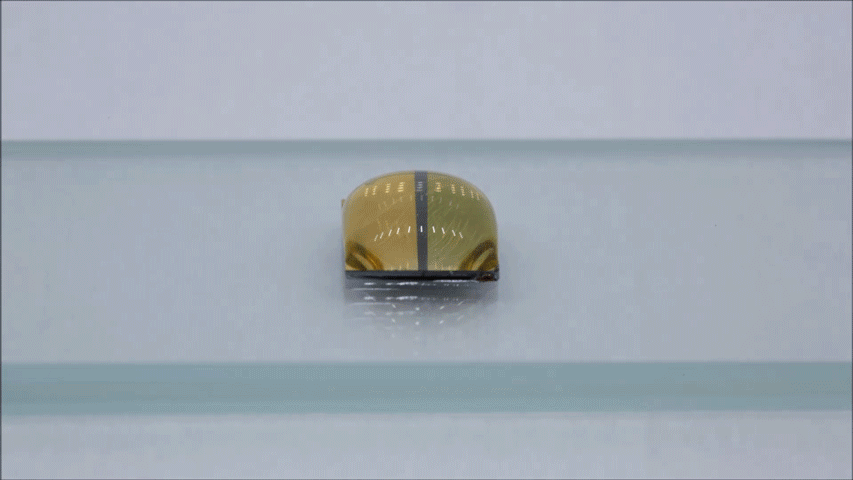
ROSE transfer printing. Credit: Xue Feng & Yihao Chen, Tsinghua University -
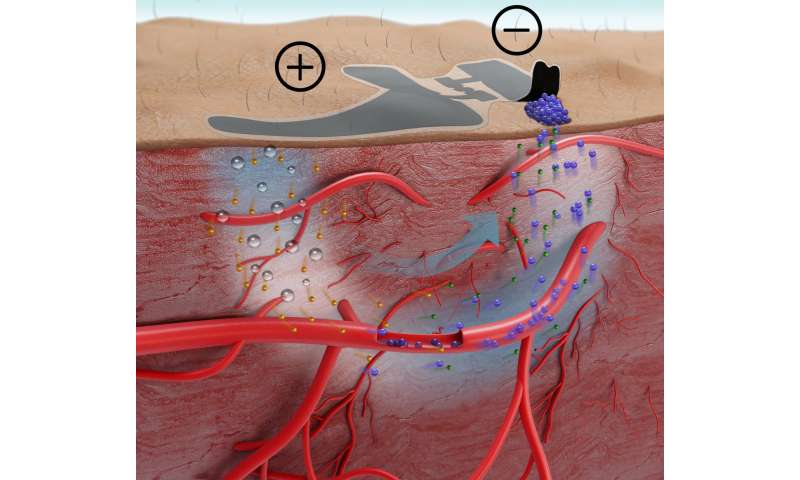
Schematic diagram of ETC non invasive glucose monitoring. Credit: Xue Feng & Yihao Chen, Tsinghua University -
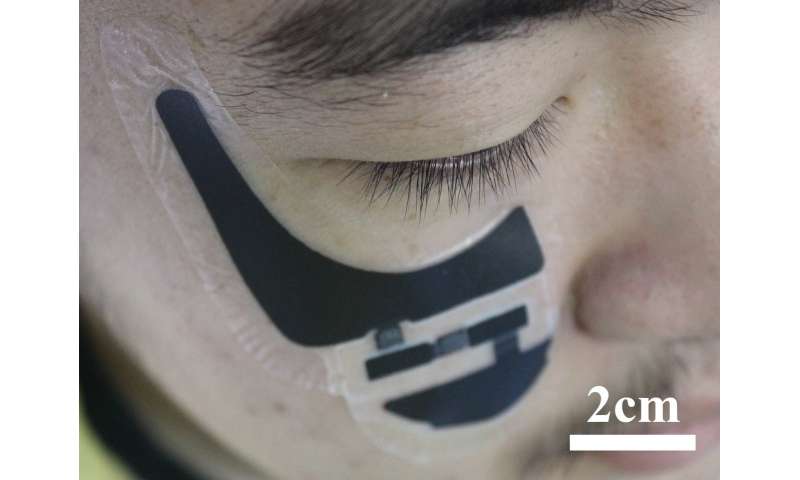
Flexible paper battery on skin. Credit: Xue Feng & Yihao Chen, Tsinghua University -
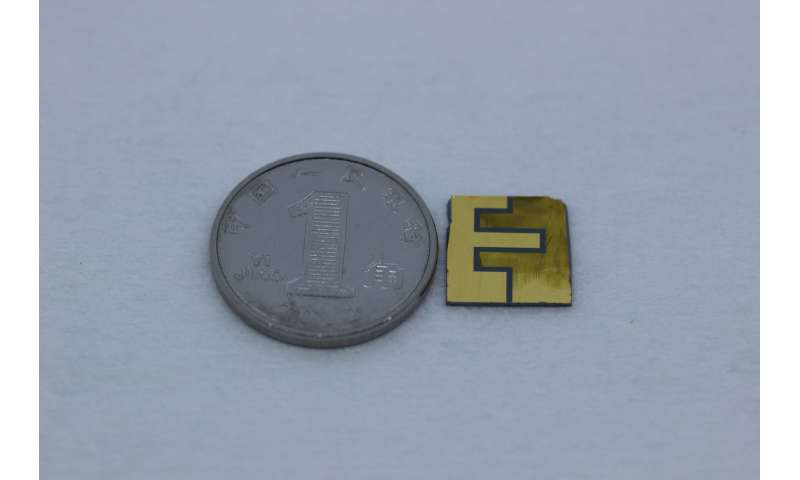
Biosensor size comparison. Credit: Xue Feng & Yihao Chen, Tsinghua University
More information: Yihao Chen et al. Skin-like biosensor system via electrochemical channels for noninvasive blood glucose monitoring, Science Advances (2017). DOI: 10.1126/sciadv.1701629
Abstract
Currently, noninvasive glucose monitoring is not widely appreciated because of its uncertain measurement accuracy, weak blood glucose correlation, and inability to detect hyperglycemia/hypoglycemia during sleep. We present a strategy to design and fabricate a skin-like biosensor system for noninvasive, in situ, and highly accurate intravascular blood glucose monitoring. The system integrates an ultrathin skin-like biosensor with paper battery–powered electrochemical twin channels (ETCs). The designed subcutaneous ETCs drive intravascular blood glucose out of the vessel and transport it to the skin surface. The ultrathin (~3 μm) nanostructured biosensor, with high sensitivity (130.4 μA/mM), fully absorbs and measures the glucose, owing to its extreme conformability. We conducted in vivo human clinical trials. The noninvasive measurement results for intravascular blood glucose showed a high correlation (>0.9) with clinically measured blood glucose levels. The system opens up new prospects for clinical-grade noninvasive continuous glucose monitoring.
© 2017 Medical Xpress
















